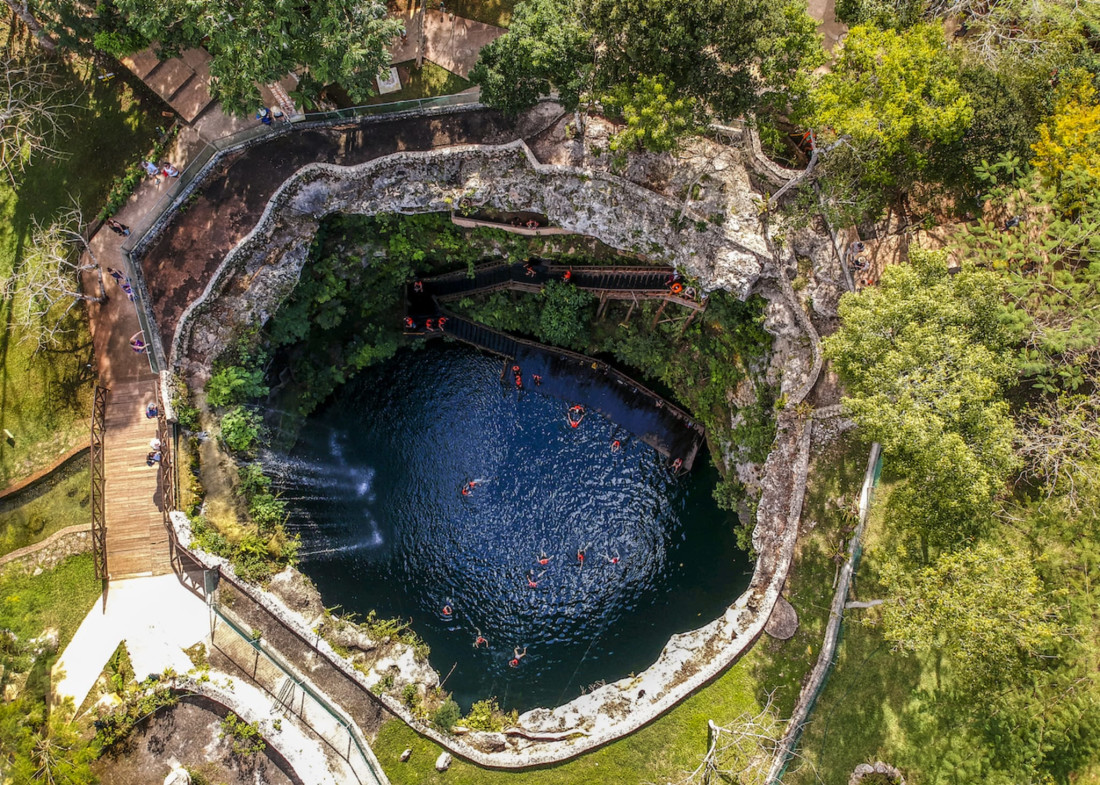
Nestled in the heart of the Yucatan Peninsula, Mérida, in Mexico, beckons travelers with its rich history and colonial charm. Beyond its cobblestone streets and vibrant markets, Mérida offers a treasure trove of outdoor adventures, with its crown jewels being the mystical cenotes and expansive nature reserves. In this article, we'll delve into the allure of Mérida's natural wonders and answer some intriguing questions about these unique geological formations.
Does Mérida have cenotes?
Indeed, Mérida is surrounded by a myriad of cenotes, each with its own enchanting beauty. The Yucatan Peninsula's limestone bedrock is riddled with natural sinkholes, creating a captivating underworld waiting to be explored. From open-air cenotes surrounded by lush greenery to partially enclosed caverns with stalactites and stalagmites, Mérida offers a diverse array of these geological wonders.
Are cenotes in Mexico fresh water?
The majority of cenotes in Mexico are filled with fresh water, thanks to the region's intricate network of underground rivers and aquifers. The Yucatan Peninsula's porous limestone allows rainwater to filter through, resulting in crystal-clear freshwater cenotes. This not only contributes to their stunning aesthetic but also makes them ideal for a refreshing swim on a hot day.

Is Mexico the only place with cenotes?
While Mexico is synonymous with cenotes, it's not the exclusive home to these geological marvels. Similar formations can be found in other limestone-rich regions worldwide, including Belize, some Caribbean islands, and parts of Central America. Nevertheless, Mérida and the Yucatan Peninsula remain unparalleled in terms of the sheer number and variety of cenotes.
Why are cenotes so important to the Yucatan?
Cenotes hold a profound cultural and ecological significance for the Yucatecan people. In ancient Mayan civilization, cenotes were considered sacred and believed to be portals to the underworld. Today, these natural formations play a crucial role in the local ecosystem, providing fresh water for both wildlife and communities. The Yucatan's reliance on cenotes for freshwater underscores their enduring importance.
What part of Mexico has the most cenotes?
The Yucatan Peninsula stands as the undisputed champion when it comes to the abundance of cenotes. Its porous limestone terrain has given rise to an extensive network of underground rivers and caves, resulting in numerous cenotes scattered across the landscape. Whether you're exploring near Mérida, Tulum, or Valladolid, you're bound to encounter these natural wonders at every turn.

What is the most beautiful cenote in Mexico?
Determining the "most beautiful" cenote is subjective, as each holds its own unique charm. However, one that consistently captivates visitors is Ik Kil, situated near the famed Chichen Itza archaeological site. This cenote's sheer beauty is heightened by the lush vegetation that cascades into its depths, creating a surreal and awe-inspiring environment. Ik Kil's deep azure waters invite visitors to plunge in or simply bask in the natural splendour that surrounds them.
Embarking on outdoor adventures in Mérida reveals a world of wonders waiting to be explored. The cenotes and nature reserves of the Yucatan Peninsula offer a diverse tapestry of experiences, from swimming in freshwater pools to hiking through pristine landscapes. As you navigate Mérida's outdoor paradise, let the mysteries of cenotes and the beauty of nature reserves weave a narrative that leaves an indelible mark on your travel memories. Embrace the allure of Mérida's natural wonders, and let the Yucatan Peninsula's breathtaking landscapes unfold before you, making your journey an unforgettable exploration of Mexico's outdoor treasures.






